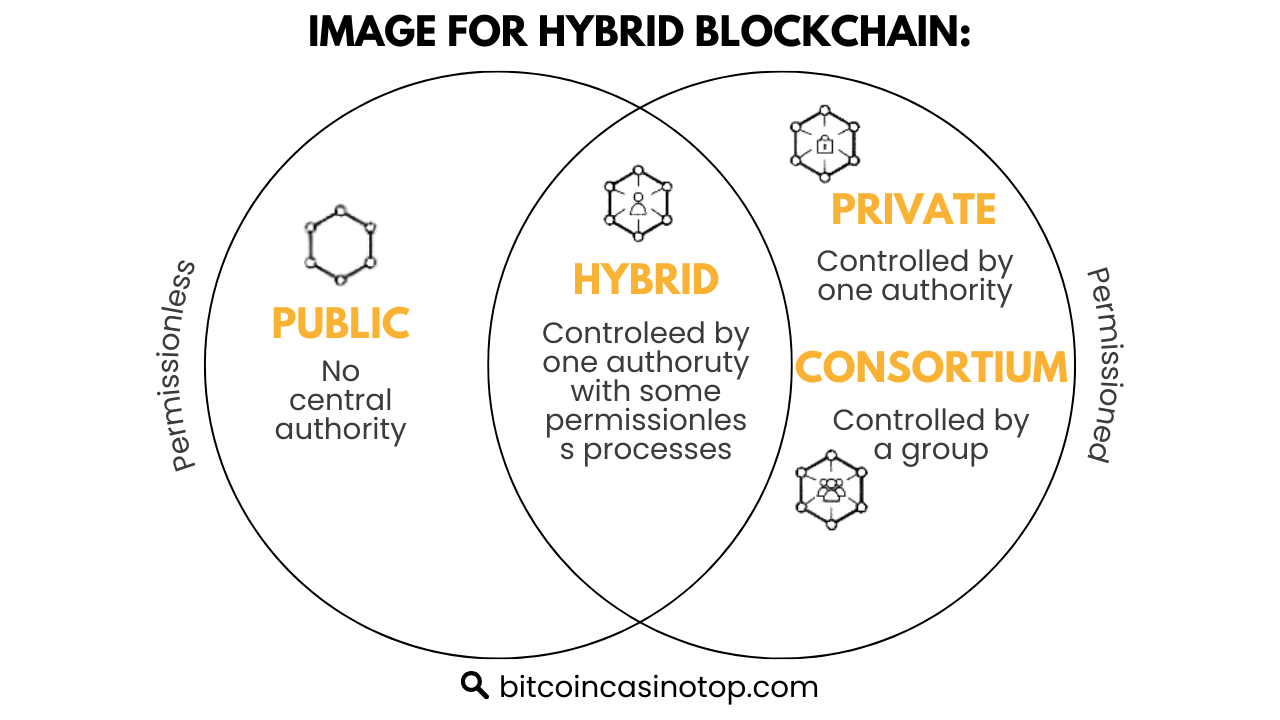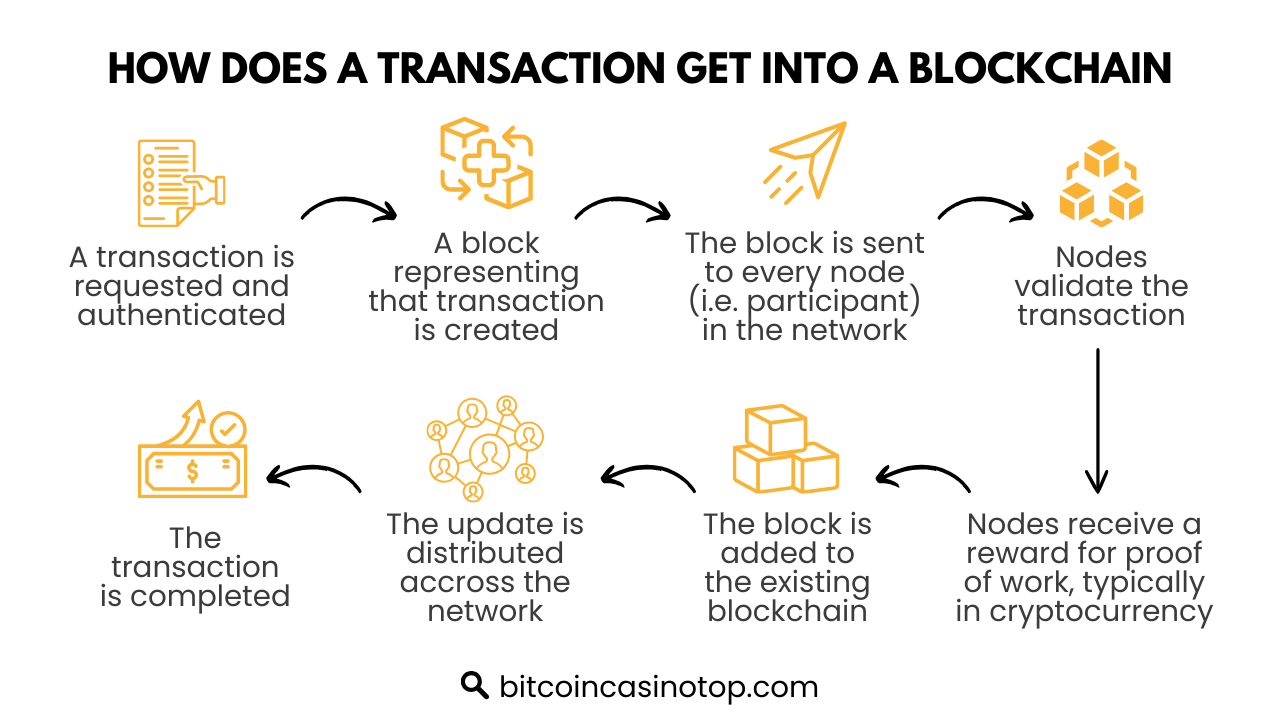A blockchain network is a form of decentralized technology that records transactions over a network of computers (nodes). These transactions are pooled into groups called blocks and each new block is linked to the previous block.
This results in a continuous chain hence the term “blockchain”. The structure of blockchains is immutable meaning the block data is unchangeable.

- Decentralization
- Security
- Transparency
- Consensus mechanisms
- Immutability
- Interoperability
- Tokenization
- Confidentiality
- Digital Identity
- Energy Efficiency
Let’s take a brief look at the different types of blockchain after which I will provide the top blockchain companies and the different industries that use this technology.
Types of Blockchain Networks
| Type of Blockchain | Description |
|---|---|
|
Public blockchains are open networks that allow anybody to participate within the network. They have high levels of decentralization and transparency. Anybody can view the transactions on a public blockchain making them ideal for certain use cases as mentioned below.Advantages: – Decentralization Disadvantages: – Slow performance Main use cases: – Supply chain management |
|
Private blockchains are restricted networks that are controlled and managed by a selected number of people within an organization.
Only specific people can view and modify the blockchain. They are also selected individuals who can approve any transactions. These are also known as permissioned or business blockchains as not everyone can join. Advantages: – Speed and efficiency Disadvantages: – Lower trust levels Main use cases: – Supply chain management |
|
These blockchains connect two or more blockchain networks allowing for integration and interoperability. They work simultaneously which allows projects to deploy smart contracts within the chain that connect individual chains into one network.
These chains cooperate within the same ecosystem to efficiently transfer assets and information. It allows users access to various applications that only one blockchain cannot offer. By creating a multi-chain, creators can offer services to many users on another blockchain. Advantages: – Scalability Disadvantages: – Less liquidity Main use cases: – Content creation |
| 4. Hybrid Blockchain | This blockchain is the intersection between public and private blockchains.This means users can create a private permissionless system alongside a public network so they can choose who can access the blockchain data.
Although transactions are not normally made public, access can be granted using a smart contract to external individuals for validation.  – Increased security Disadvantages: – Reduced transparency Main use cases: – Real estate systems |
| 5. Consortium Blockchain | These blockchains are similar to hybrid blockchains and are also known as federated blockchains. It is a private blockchain that limits access to members of a certain group of entities.
Preset member nodes control the consensus process that can create or receive transactions. A validator node initiates and verifies transactions These types of blockchains are usually used by multiple financial institutions with their individual private blockchains.  – Scalability Disadvantages: – Transparency Main use cases: – Finance and banking |
What are Blockchain Networks Used For?
Now that you have an idea of what is a blockchain network, we can see below the various other industries for which the decentralized nature of this innovative technology is attractive. This is because of the features described above.
Some of the industries into which blockchain has been adopted include:
- Cryptocurrencies
- Supply Chain Management
- Smart Contracts
- Identity Verification
- Healthcare
- Voting Systems
Blockchain networks have been popularized because of their proliferation in cryptocurrency. This usage has brought the technology into the limelight. They are the central technology behind cryptocurrencies. Without this tech, crypto itself would not exist.
It is essential for the verification and recording of transactions so explaining “What are blockchain networks“, and understanding “How blockchain networks work” could be helpful to you before investing in cryptocurrencies.
Keep reading to find out.
How Do Crypto Blockchain Networks Work?

- Step 1: User initiates the transaction.
- Step 2: Crypto miners verify the transaction’s authenticity.
- Step 3: Mining is conducted through consensus mechanisms.
- Step 4: Block is created.
- Step 5: Block is verified via consensus.
- Step 6: Block is secured and sealed.
- Step 7: Transaction is recorded on a public ledger.
- Step 8: Transaction is confirmed and completed.
This innovative technology has allowed for networks to be personalized and made useful for specific tasks.
Biggest Blockchain Networks
Blockchain numbers have continued to rise and currently number over 1,000 worldwide. These are ranked according to their Total Value Locked or TVL.
DEFINITION by Edward: TVL is a measure of the total number of digital assets that have been deposited or locked in a blockchain.
It works as a measure of the health of the chain specifically used for decentralized finance (DeFi) projects and a higher TVL indicates that more capital is available. A high TVL creates more trust and indicates a higher demand for that protocol. Ethereum and IBM rank as some of the biggest chains when measured according to TVL.
In the case of cryptocurrencies, the market cap is often used as a measure of the total value of all the crypto coins that have been mined. Not surprisingly the biggest blockchain is Bitcoin (BTC).
Below is a blockchain network list of the top 10 blockchains across various industries.
- IBM Blockchain – Financial and Insurance Services
- Tron – Cryptocurrency
- Stellar – Cryptocurrency
- NEO – Cryptocurrency
- Corda – Financial Services
- Ethereum – Cryptocurrency
- Multichain – Cryptocurrency
- EOS – Cryptocurrency
- Hyperledger Fabric – Blockchain creation
- OpenChain – Cryptocurrency
What else can I say about blockchain networks?
As blockchain gains more popularity among businesses, it is useful for you to understand what blockchains are and how they work. If you are looking to create or use an existing blockchain, this article is intended to provide the necessary information to help you make a wise decision.
By knowing about the different types of blockchains, you will gain the relevant information as to which blockchain is best for your use. The different types have their advantages and disadvantages so you can choose the one that fits your specific needs.
